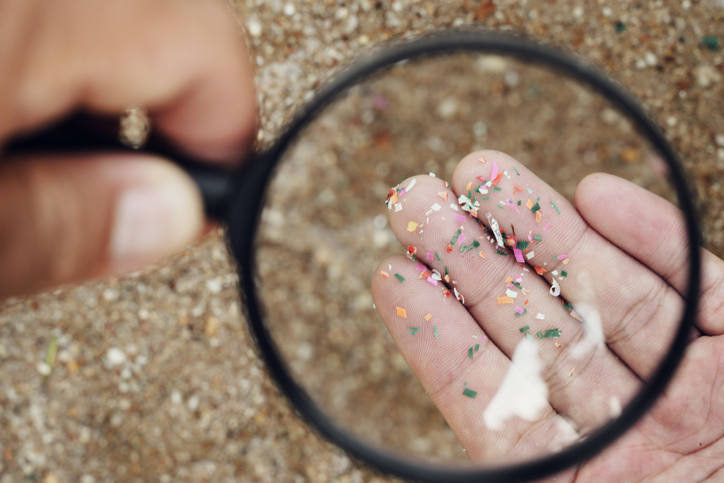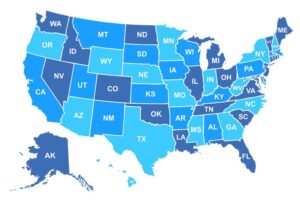Microplastics; an emerging future risk

By AXA XL Practice Leader, Environmental & Mining, Dominik Scheiben
Microplastics pose potential risks to animal and human health. These tiny plastic particles have been found in oceans, in drinking water sources and even in human stools. While the full risks to human health are, as yet, unknown, regulators and stakeholders around the world are beginning to take action to restrict the use of microplastics and to prevent their accidental dispersal into the environment. Dominik Scheiben, Practice Leader Environmental & Mining at AXA XL, discusses this emerging risk.
In 2004, a marine ecologist at the University of Plymouth, UK, coined the term ‘microplastics’ to describe tiny particles of plastic found in the oceans and on beaches. The risk to marine life of these particles has been top of mind for ecologists for some time now, but the potential risk to human health is now becoming a great concern too. And these particles are not just present in oceans and marine life; they have been found in food and beverage products and drinking water, for example.
Regulators around the world are examining the emerging risks associated with microplastics and ways that the preponderance of these particles – particularly in water sources – can be curbed. Several high-profile lawsuits and investigations in the United States have also focused risk experts’ attention on microplastics and the potential risk of harm to animal and human health.
Microplastics are particles of 5 millimetres or less in diameter. Nanoplastics are even tinier particles; smaller than 100 nanometres (=0.1 micrometres). Micro and nanoplastics can be categorised as either primary or secondary microplastics. Primary microplastics are those that have been designed for commercial use. These can include particles used in cosmetics and personal care products, such as microbeads, and micofibres, which shed during the laundering of synthetic clothing, the abrasion of tyres while driving and other sources such as fishing lines. Primary microplastics are thought to represent between about 15% and 31% of the microplastics found in oceans. Secondary microplastics are particles that result from the breakdown of large items, like plastic bottles or bags, and represent between 69% and 81% of the microplastics found in the ocean.
While governments, regulators, nonprofits and commercial companies and their stakeholders have increased their focus on the recycling of products including plastics in recent years, a shocking amount of plastic still ends up in landfill, being incinerated or simply dumped. The U.S. Environmental Agency, for example, estimates that only about 9% of plastic is recycled. When you take into account the fact that about 367 million metric tonnes of plastic were produced globally in 2020, and that a plastic bottle takes about 400 years to decompose – and a plastic fishing line as long as 600 years – the scale of the potential risk becomes clear.
The potential health risks
Microplastics are known to have caused disease in marine life. Pathogens from land can attach themselves to microplastics that then form concentrations around coastlines or travel out to sea. These pathogens can then bind to biofilms in the faeces of infected animals and contaminate the environment around them.
As well as risk to marine life health, there are several major risks to human health posed by this process. For example, one such common contaminant is Crytosporidium & Giardia, which can cause gastrointestinal disease that can be fatal for young children and immuno-compromised adults. Another common contaminant, Toxoplasma gandii, can cause lifelong infection in human and be fatal for the immune-compromised. Infection in pregnant women can result in miscarriage, or blindness or neurological disease in the foetus.
Tiny nanoplastics can breach animal cells and enter the bloodstream. While the full effects on human health are unknown, nanoplastics could transport harmful chemicals that could cause severe health effects, including DNA damage.
The scope of the issue
This risk is not just limited to marine waters. Indeed, a 2018 study found microplastics in about 90% of tested bottled water globally, while a 2017 study found that about 94% of tested tap water in the United States and about 72% of tested tap water in Europe contained microplastics. Microplastics have also been detected in food and beverage products and even in human stools. And the prevalence of microplastics and the potential risks associated with them have caught the attention of regulators, lawmakers and litigators around the world.
California has a state-wide policy aimed at tackling the issue of plastic pollution. In September 2022, California’s water regulators approved a set of standardised requirements to test levels of microplastics in sources of drinking water over the next four years – and the results of the study will be published. These are the first standard requirements on microplastics anywhere in the world; other regulatory bodies may follow suit.
The European Chemicals Agency has proposed a set of restrictions on the use of primary microplastics in the EU. Among other measures, these restrictions will require companies to stop adding microplastics to products like detergents or cosmetics. The requirements are slated to come into fore at the end of this year.
There have also been some high-profile legal actions related to this issue. For example, California’s Attorney General has announced an investigation into the fossil fuel and petrochemical industries for an alleged cover-up of the impact of plastic pollution. The U.S. has also seen a number of legal charges brought against food and beverage companies for “deceptive” recycling claims, while other lawsuits have been brought against corporations for the discharging of microplastics.
Looking forward, it seems likely that there will be increased regulatory and governmental focus on microplastics and a greater liability and reputational risk for companies that are found to contribute to microplastic pollution.
Risk experts are yet to fully understand the implications for both human and animal health of microplastics and the ways in which companies can reduce the risk of pollution and damage. In the meantime, we are working with clients to find ways to reduce and manage the risks to minimise the dangers to the environment and health.





